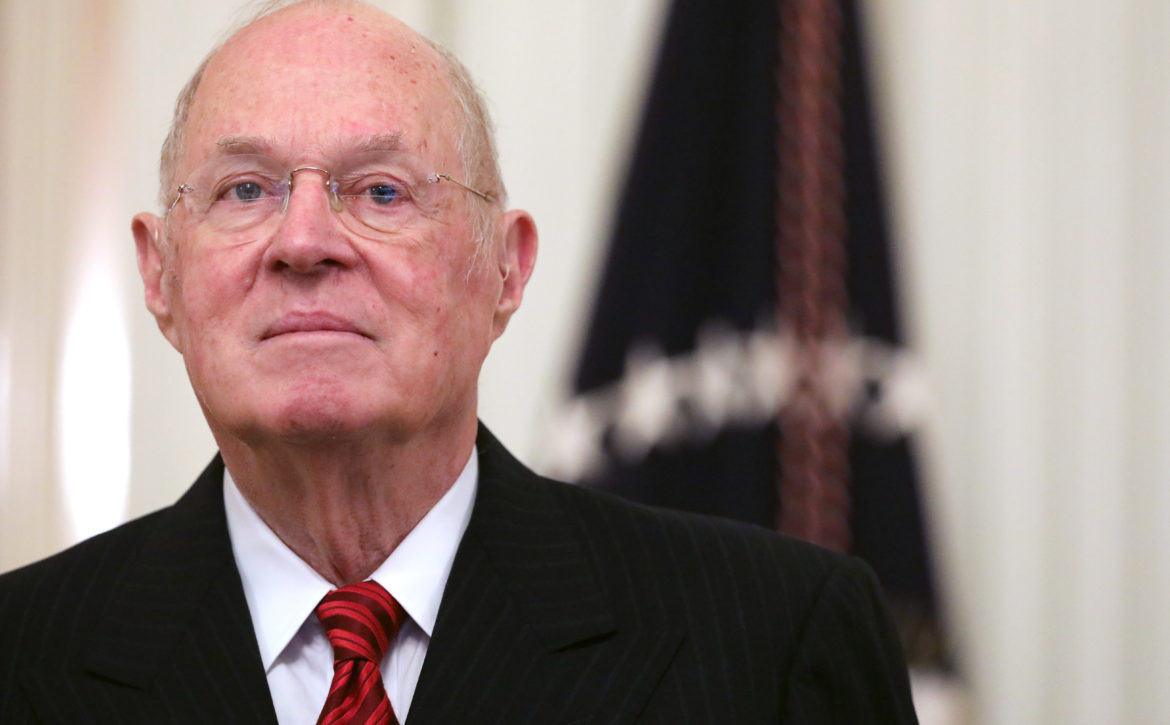
Blame Anthony Kennedy for the Supreme Court’s Mangled Ruling on Juvenile Life Without Parole
On Thursday, the Supreme Court reversed course on its decade-and-a-half push to reduce the most serious sentences for prisoners who committed crimes as children. In two previous decisions, the court said that life-without-parole sentences should only be given to juvenile defendants who were truly beyond rehabilitation. But in a 6-3 decision, the court’s conservative bloc took a different approach, holding that states weren’t actually obligated to make such formal findings.Justice Brett Kavanaugh, who wrote for the court, argued that the ruling followed two major precedents where his predecessor Anthony Kennedy played a decisive role. In a scathing dissent, Justice Sonia Sotomayor wrote that the majority had disregarded the substance of those cases. Strangely, both Kavanaugh and Sotomayor are correct. And the responsibility—or perhaps the blame—for the inability to reconcile these differences lies with Kennedy.The case, Jones v. Mississippi, is only the latest chapter in a series of cases about juvenile defendants. Before 2005, prisoners could be executed or locked up forever for crimes they committed before they were 18 years old. Then, in Roper v. Simmons, the Supreme Court abolished capital punishment for juvenile defendants. That ruling left life without parole as the most severe punishment that could be imposed upon them instead. Perhaps recognizing this, the court then held in Graham v. Florida in 2010 that juvenile defendants could not receive life-without-parole sentences if they committed anything less than murder. Kennedy, the court’s swing vote at the time, wrote both decisions.At the center of these rulings was the justices’ conclusion that the Eighth Amendment’s ban on cruel and unusual punishment treats children differently than adults. Part of this reasoning drew upon scientific findings, including that juveniles are more vulnerable to negative influences and less aware of the consequences of their actions. A young person’s personality is not yet fully formed, so except in extreme cases, they also have a much greater chance of redemption. The justices also drew upon something more elemental—what “every parent knows,” as Kennedy once phrased it.So how far does that reasoning go? In 2012, the court ruled in Miller v. Alabama that states could not impose mandatory life-without-parole sentences on juvenile defendants. “By making youth (and all that accompanies it) irrelevant to [the] imposition of that harshest prison sentence, such a scheme poses too great a risk of disproportionate punishment,” Justice Elena Kagan wrote for the majority, with Kennedy providing the fifth vote. But the court’s ruling stopped there: Kagan and the other justices explicitly declined to take the opportunity to go any further.“Because that holding is sufficient to decide these cases, we do not consider [Miller’s] alternative argument that the Eighth Amendment requires a categorical bar on life without parole for juveniles, or at least for those 14 and younger,” Kagan explained. “But given all we have said in Roper, Graham, and this decision about children’s diminished culpability and heightened capacity for change, we think appropriate occasions for sentencing juveniles to this harshest possible penalty will be uncommon.”Prosecutors and judges throughout the country disagreed. The Juvenile Law Center, along with dozens of other civil-rights organizations, told the justices in a friend-of-the-court brief in Jones that some states had not responded to the Miller ruling with their preferred level of caution. “For example, between 2012 and 2017, courts in Louisiana imposed sentences of life imprisonment without parole on 62 percent of juvenile offenders convicted of homicide,” the groups told the court. “Similarly, in Michigan, prosecutors have sought to reimpose life without parole sentences in nearly two-thirds of the cases eligible for resentencing, and the courts in many of those cases have agreed.”The Supreme Court does not apply most of its rulings on criminal law retroactively, largely because it does not want the lower courts to be jammed up with resentencing hearings after every ruling. But the court does allow for retroactive effects when the ruling is particularly consequential. In 2016, the court ruled in Montgomery v. Louisiana that its decision in Miller met that threshold. The ruling opened the door for more than 2,000 prisoners who had received mandatory life-without-parole sentences before the Miller ruling to be resentenced.Kennedy, writing for the majority, said that life-without-parole would only be justified if the defendants’ crimes reflected “irreparable corruption” or “permanent incorrigibility.” He repeatedly stressed that these individuals—and thus juvenile life-without-parole sentences—would be few and far between. Antonin Scalia, in what would be his last published writing for the court before his death, denounced Kennedy’s ruling in unusually personal terms in a dissent. Among other things, he alleged that the majority’s vague requirement was a bait-and-switch operation of sorts.“This whole exercise, this whole distortion of Miller, is just a devious way of eliminating life without parole for juvenile offenders,” Scalia claimed. “The Court might have done that expressly (as we know, the Court can decree anything), but that would have been something of an embarrassment. After all, one of the justifications the Court gave for decreeing an end to the death penalty for murders (no matter how many) committed by a juvenile was that life without parole was a severe enough punishment.”“How could the majority—in an opinion written by the very author of Roper—now say that punishment is also unconstitutional?” he continued. “The Court expressly refused to say so in Miller. So the Court refuses again today, but merely makes imposition of that severe sanction a practical impossibility. And then, in Godfather fashion, the majority makes state legislatures an offer they can’t refuse: Avoid all the utterly impossible nonsense we have prescribed by simply ‘permitting juvenile homicide offenders to be considered for parole.’ Mission accomplished.”In other words, Kennedy had effectively handed down two decisions. One of them was noble and moral: that children, even those who commit heinous acts, must be given the opportunity to show that they are not beyond redemption. The other was more glacial and procedural, placing the Supreme Court firmly against juvenile life-without-parole sentences without going so far as to actually abolish them. Had Kennedy remained on the court, he might have yet added some teeth to this precedent. He retired in 2018, however, before such a case could reach him.Jones, the plaintiff in Thursday’s decision, still argued that the lower courts must find that he is “permanently incorrigible” before resentencing him to life without parole. Kavanaugh and the majority refused to go that far. “The problem for Jones is that Miller and Montgomery squarely rejected such a requirement,” he wrote. “Miller mandated ‘only that a sentencer follow a certain process—considering an offender’s youth and attendant characteristics—before imposing’ a life-without-parole sentence. Montgomery then flatly stated that ‘Miller did not impose a formal factfinding requirement’ and that ‘a finding of fact regarding a child’s incorrigibility . . . is not required.’”Even Justice Clarence Thomas, who argued that Montgomery should be overturned, wrote separately to note that the majority had adopted a “strained reading” of that decision. Sotomayor went much further in her own dissent. “This conclusion would come as a shock to the Courts in Miller and Montgomery,” she wrote. “Miller’s essential holding is that ‘a lifetime in prison is a disproportionate sentence for all but the rarest children, those whose crimes reflect irreparable corruption.’” By not imposing a fact-finding requirement, Sotomayor argued, the majority had “abandoned” the two decisions and upended its own approach to precedent.“How low this Court’s respect for stare decisis has sunk,” she wrote, using the Latin term for following precedents. Sotomayor noted that the court typically declines to overturn its precedents unless a party explicits asks them to do so, which didn’t happen here. “Now, it seems, the Court is willing to overrule precedent without even acknowledging it is doing so, much less providing any special justification,” she claimed, quoting from Kavanaugh’s own past writings on stare decisis. “It is hard to see how that approach is ‘founded in the law rather than in the proclivities of individuals.’”Kavanaugh insisted multiple times that the majority wasn’t actually discarding the previous cases, just reading them narrowly. “We respectfully but firmly disagree: Today’s decision does not overrule Miller or Montgomery,” he countered. “Miller held that a State may not impose a mandatory life-without-parole sentence on a murderer under 18. Today’s decision does not disturb that holding. Montgomery later held that Miller applies retroactively on collateral review. Today’s decision likewise does not disturb that holding.”It’s hard to not see that as a “strained” reading, to say the least. It strips both decisions of the underlying reasoning and spirit even if it doesn’t overrule them outright. But Kavanaugh noted that the fault was not entirely his. “If the Miller or Montgomery Court wanted to require sentencers to also make a factual finding of permanent incorrigibility, the Court easily could have said so—and surely would have said so,” he wrote. “But the Court did not say that, or anything like it. On the contrary, the Montgomery Court declared just the opposite: that the sentencer need not make such a separate factual finding of permanent incorrigibility.”For most of the last two decades, Kennedy’s thinking on the Eighth Amendment essentially became the court’s thinking on the Eighth Amendment. Such is the fate of a moderate justice who served with two equally divided ideological blocs. At the same time, he also had a tendency to write decisions that left an unclear path for future judges to follow. This would not have been a problem if Kennedy had remained on the court as its deciding vote in major cases. But no justice can stay on the court forever.Every American is familiar with Kennedy’s ruling in Obergefell v. Hodges, for example, which struck down bans on same-sex marriage across the country in 2015. But even some who supported the outcome had qualms about the way he reached it. Did the bans violate the Equal Protection Clause or the Due Process Clause of the Fourteenth Amendment? Kennedy concluded that it violated some combination of them, carving out a new approach. Do laws targeting gay and lesbian Americans receive heightened scrutiny from courts under the court’s equal-protection rulings, as some advocates suggested? Kennedy did not quite say.For many who read the decision, this didn’t really matter at the time. I attended a wedding a few months after Obergefell came down where the officiant read Kennedy’s famous closing paragraph on the importance of marriage. But the ruling, though momentous, left open doors that future justices who are less favorable towards gay rights can close. Americans’ widespread acceptance of marriage equality makes it extremely unlikely that Obergefell itself would be overturned, of course. Not all of Kennedy’s decisions dealt with groups that enjoy the same level of public support, however. For them, his reluctance to hand down clear rulings in certain cases will be a headache for years to come.
Read More

